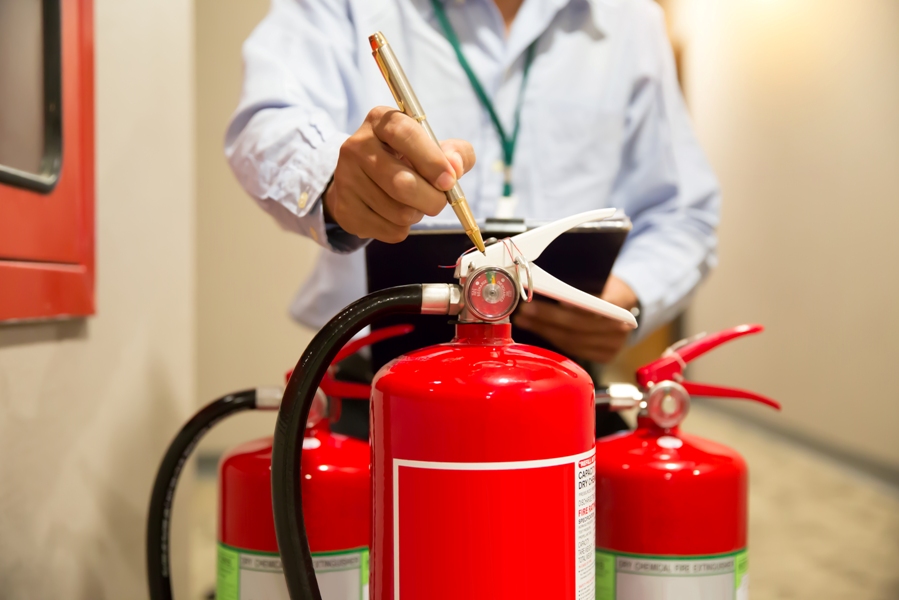
You’ve Finished OSHA Safety Training – Now What?
March 29, 2023
Flagger Safety Jobsite Hazards and Steps to Mitigate Them
June 9, 2023OSHA Cards – A Reference Guide

When it comes to ensuring workplace safety and adhering to industry regulations, OSHA (Occupational Safety and Health Administration) plays a pivotal role. OSHA offers various safety certifications that validate an individual’s knowledge and understanding of workplace safety practices. In this reference guide, we will explore the world of OSHA safety certification, focusing on the two most popular certifications: OSHA 10 and OSHA 30. We will take an in-depth look into the importance of OSHA cards, who needs them, the types of OSHA cards available, their benefits, how to obtain them, and other essential details. Let’s get started!
What Is an OSHA Card?
An OSHA card, also known as an OSHA safety certification card, is an official document issued by OSHA to individuals who successfully complete OSHA-approved training programs. It serves as proof of completion and signifies that the cardholder has received training in occupational safety and health standards.
Who Needs an OSHA Card?
OSHA cards are essential for individuals working in industries where workplace safety is a top priority. This includes workers in construction, manufacturing, healthcare, warehouses, and many other sectors. Employers often require their workers to possess OSHA cards to ensure compliance with safety regulations and to mitigate potential risks in the workplace.
Types of OSHA Cards:
OSHA offers two primary types of safety certification cards: OSHA 10 and OSHA 30.
OSHA 10 Card:
The OSHA 10 certification provides a fundamental understanding of workplace hazards and safety procedures. This 10-hour training course covers a wide range of topics, including hazard recognition, fall protection, personal protective equipment (PPE), electrical safety, and more. The OSHA 10 card is recommended for entry-level workers and employees who have minimal supervisory or safety-related responsibilities.
OSHA 30 Card:
The OSHA 30 certification is a more comprehensive program designed for individuals with supervisory or safety-related roles. This 30-hour training course dives deeper into topics covered in OSHA 10, while also addressing more advanced subjects such as ergonomics, hazard communication, fire prevention, and confined space entry. The OSHA 30 card is suitable for foremen, supervisors, and workers responsible for overseeing safety in the workplace.
OSHA 10 Card Benefits:
Obtaining an OSHA 10 card offers several benefits, including:
- Enhanced Safety Knowledge: OSHA 10 training equips workers with the knowledge to identify potential hazards and take appropriate measures to mitigate them, creating a safer working environment.
- Improved Employability: Having an OSHA 10 card enhances employability prospects as many employers prioritize candidates with certified safety training.
- Increased Workplace Confidence: OSHA 10 training instills confidence in workers, allowing them to perform their duties with a greater sense of security and competence.
OSHA 30 Card Benefits:
Earning an OSHA 30 card provides individuals with several advantages, including:
- Advanced Safety Expertise: OSHA 30 training goes beyond the basics, providing in-depth knowledge and strategies for addressing complex safety issues, thereby enhancing overall workplace safety.
- Leadership and Supervisory Skills: OSHA 30 equips individuals in supervisory roles with the skills necessary to effectively manage and promote safety among their teams.
- Career Advancement Opportunities: Possessing an OSHA 30 card can open doors to higher-level positions, as many employers seek individuals with advanced safety training for management and leadership roles.
Which OSHA Card Do I Need?
Determining which OSHA card you need depends on your job responsibilities and the requirements of your industry or employer. As a general guideline, entry-level workers or those with minimal safety responsibilities typically require an OSHA 10 card. On the other hand, if you have supervisory duties or are responsible for safety oversight, the OSHA 30 card is more appropriate. It’s essential to check with your employer or industry guidelines to ensure you choose the right certification for your role.
How Do I Get My OSHA Card?
To obtain an OSHA card, you need to do the following:
Find an OSHA-Authorized Training Provider: Visit OSHA’s website or contact your local OSHA office to find authorized training providers in your area. Ensure that the provider offers the OSHA card certification you need (OSHA 10 or OSHA 30).
Enroll in an OSHA-Authorized Training Course: Register for the OSHA-approved training course offered by the authorized training provider. These courses are usually conducted in-person or online, providing flexibility in terms of time and location.
Complete the Training: Attend and actively participate in the training sessions. The OSHA 10 course typically lasts for ten hours, while the OSHA 30 course extends to 30 hours. Ensure you grasp the concepts and ask questions when needed.
Pass the Final Exam: At the end of the training, you will be required to pass a final exam to demonstrate your understanding of the course material. The passing score may vary, but it typically ranges from 70% to 80%.
Receive Your OSHA Card: Once you successfully complete the training and pass the exam, the authorized training provider will issue your OSHA card. This card will include your name, the course you completed (OSHA 10 or OSHA 30), the date of completion, and the expiration date.
Do OSHA Cards Expire?
Yes, OSHA cards have an expiration date. The OSHA 10 card is valid for five years from the date of completion, while the OSHA 30 card is valid for three to five years, depending on the training provider and industry requirements. It’s crucial to keep track of the expiration date and plan for recertification before your card expires to ensure your continued compliance and employability.
Can I Order a Replacement OSHA Card?
If you lose your OSHA card or need a replacement, you can typically request one from your original training provider. Reach out to them and provide the necessary information, such as your name, the course you completed, and the date of completion. They will verify your records and issue a replacement card for a nominal fee.
Conclusion
Obtaining an OSHA safety certification card, whether OSHA 10 or OSHA 30, is a valuable investment in workplace safety knowledge and career advancement. These certifications equip individuals with the necessary skills to identify hazards, implement safety measures, and promote a culture of safety in their respective industries. Remember to choose the appropriate OSHA card based on your job responsibilities, and ensure you maintain the validity of your card by keeping track of its expiration date. By prioritizing workplace safety and holding an OSHA card, you not only protect yourself but also contribute to creating safer and healthier work environments for everyone involved.
Founded on March 1, 2001, in Augusta, Georgia, Impact Safety has dedicated itself to delivering comprehensive safety programs to businesses across the CSRA region. Drawing from an extensive 35-year background in professional, industrial, and construction domains, Impact Safety has successfully transformed workplaces into secure environments while optimizing operational efficiency. Discover more about our offerings and explore OSHA safety training courses by visiting our website at https://www.impactsafetyinc.com/.



